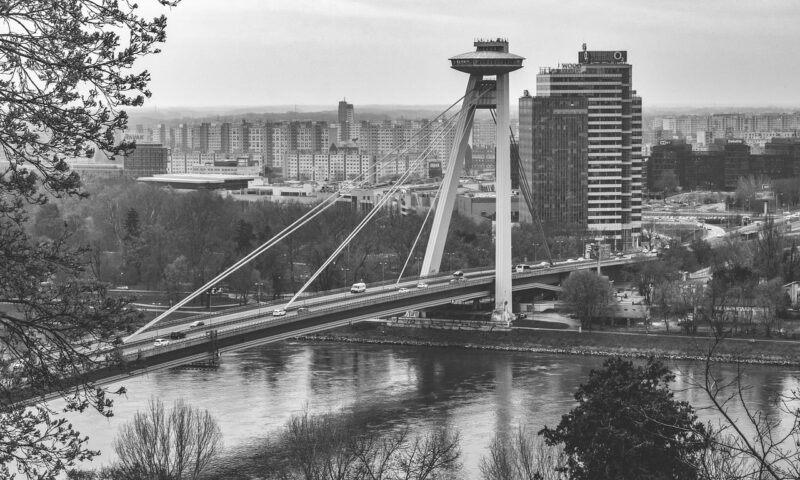
Transportation technology has evolved rapidly over the past few decades, shifting our paradigms about how we move people and goods across the globe. These advancements are not only enhancing efficiency and safety but are also revolutionizing the entire transportation landscape. In this article, we will explore five mind-blowing advancements in transportation technology that are set to impact our lives significantly in the coming years.
1. Autonomous Vehicles: The Future of Driving
The advent of autonomous vehicles is arguably one of the most significant changes in transportation technology. Companies like Tesla, Waymo, and Uber are heavily investing in self-driving technology, aiming to reduce human error, which is a leading cause of road accidents.
– How They Work: Autonomous vehicles utilize a combination of advanced sensors, cameras, and artificial intelligence (AI) to navigate roads and make real-time decisions. By collecting data from their surroundings, these vehicles can adapt to changing conditions more effectively than human drivers.
– Benefits: Reduced traffic fatalities, improved traffic flow, reduced parking needs, and increased accessibility for people with disabilities are just a few of the advantages. Furthermore, this technology could transform urban planning by reducing the need for extensive parking spaces, allowing for greener public spaces.
– The Road Ahead: Although fully autonomous vehicles (Level 5) are still in testing and regulatory phases, gradual integration of semi-autonomous features into traditional vehicles is already enhancing driving safety and convenience.
2. Hyperloop: The Train of the Future
Hyperloop technology promises to revolutionize ground transportation. Originally proposed by Elon Musk, this visionary system aims to move people in pressurized capsules through low-pressure tubes at speeds exceeding 700 mph.
– How It Works: Hyperloop uses magnetic levitation to eliminate friction between the pods and tubes, creating a smooth ride that can drastically reduce travel times. The capsules operate in a near-vacuum environment, which minimizes air resistance.
– Advantages: By drastically shortening travel times between major cities, the Hyperloop could make long-distance commuting feasible, significantly reducing road traffic and emissions from traditional transport methods. Potential routes include major urban centers like Los Angeles to San Francisco, creating new opportunities for economic growth.
– Current Status: While still in prototype phases, several companies are conducting feasibility studies and initial tests. If successful, this technology could reshape the transportation landscape and create a new benchmark for speed and efficiency.
3. Electric and Hydrogen Fuel Cell Vehicles: A Greener Alternative
As concerns over climate change rise, the push toward electric and hydrogen-fueled vehicles has escalated. These technologies aim to reduce greenhouse gas emissions and dependency on fossil fuels.
– Electric Vehicles (EVs): EVs are powered by rechargeable batteries and are already becoming mainstream, with leaders like Tesla spearheading the movement. The benefits include zero tailpipe emissions and significantly lower operating costs.
– Hydrogen Fuel Cell Vehicles (FCVs): FCVs generate electricity through a chemical process using hydrogen and oxygen, producing only water vapor as a byproduct. They offer a longer range compared to traditional electric vehicles, making them a strong candidate for long-haul transportation.
– Challenges and Opportunities: While the infrastructure for EV charging is rapidly expanding, hydrogen refueling stations are limited. However, continued governmental support and public awareness could ignite faster adoption of both technologies, leading to a drastic reduction in emissions in the transportation sector.
4. Drones and Urban Air Mobility: The Sky’s the Limit
The concept of using drones for urban transportation is gaining traction as companies like Amazon and Google explore innovative delivery solutions. Drones also offer exciting prospects for passenger transport within urban environments.
– Potential Applications: Package delivery, emergency medical services, and even passenger transport could see drone technology play a significant role. Imagine a package arriving at your doorstep minutes after you clicked “buy” or a drone medical kit dispatched to a remote location.
– Urban Air Mobility (UAM): Several companies are developing vertical take-off and landing (VTOL) aircraft to facilitate public commuter flights within cities, drastically reducing travel times and alleviating congestion on roads.
– Current Developments: Many regulatory frameworks are being established to manage air traffic systems for drones, and pilot projects are already being tested globally. As the technology matures, we may see structural shifts in how we view urban transport.
5. Smart Infrastructure: The Connectivity Revolution
Smart infrastructure involves integrating advanced technologies like IoT (Internet of Things) into transportation systems to optimize traffic flow, enhance safety, and improve the overall commuting experience.
– Smart Traffic Management: Using real-time data collected from connected vehicles and road sensors, city planners can adjust traffic signals, manage congestion, and promote smoother traffic flow. This connectivity helps reduce accidents and emissions.
– Intelligent Transportation Systems (ITS): ITS leverages data analytics to provide drivers with real-time information about traffic conditions, road closures, and optimal routes via apps or dashboard displays.
– Benefits: Improved safety, reduced travel times, and enhanced rider experience lead to decreased economic losses associated with traffic inefficiencies. Enhanced connectivity can foster a collaborative environment between transportation agencies, municipalities, and private sectors.
Conclusion
The transportation landscape is undergoing a profound transformation due to technological advancements. From autonomous vehicles that promise a safer way to travel to innovative systems like the Hyperloop and smart infrastructure that optimize the flow of people and goods, the future of transportation looks incredibly exciting. Staying informed about these advancements can help us prepare for a world that is not only faster and more efficient but also safer and more sustainable.
As we continue to embrace these groundbreaking technologies, it’s essential to consider the broader implications on urban planning, environmental impacts, and the overall quality of life in our cities. The transportation technologies that emerge will not only enhance our mobility but redefine how we live our daily lives in the future.





